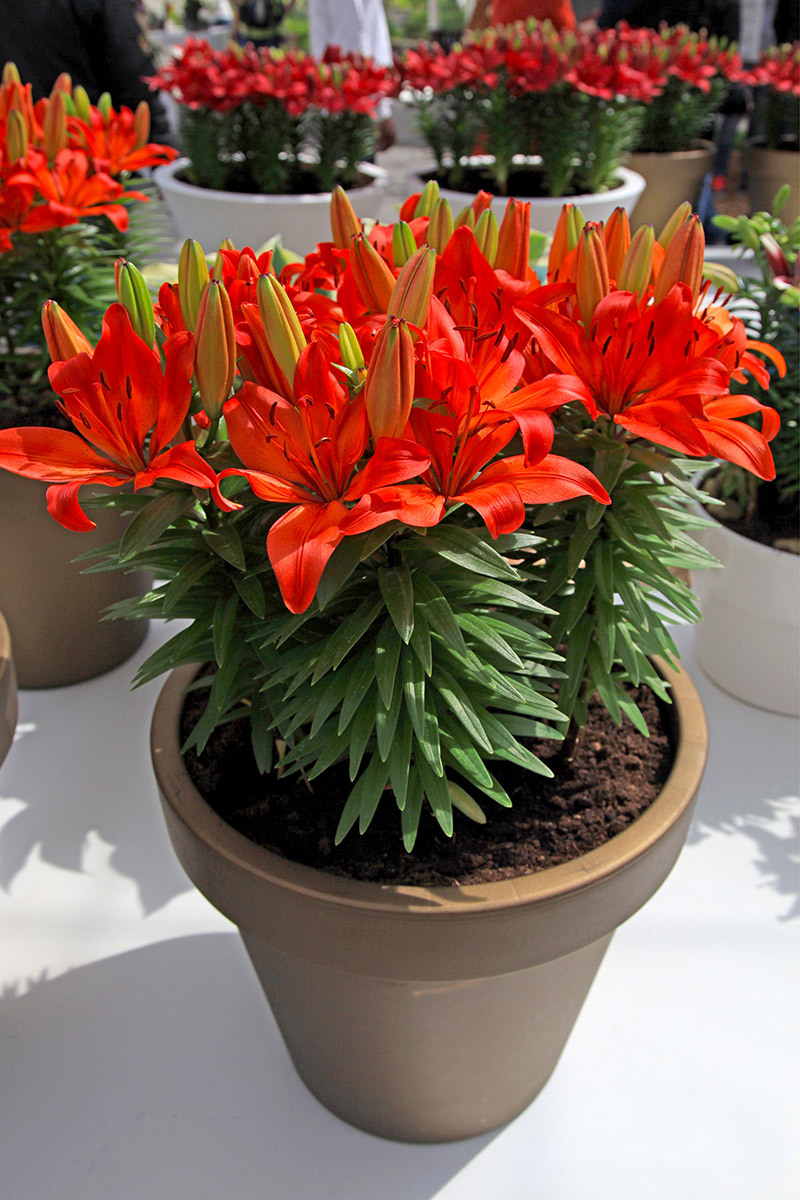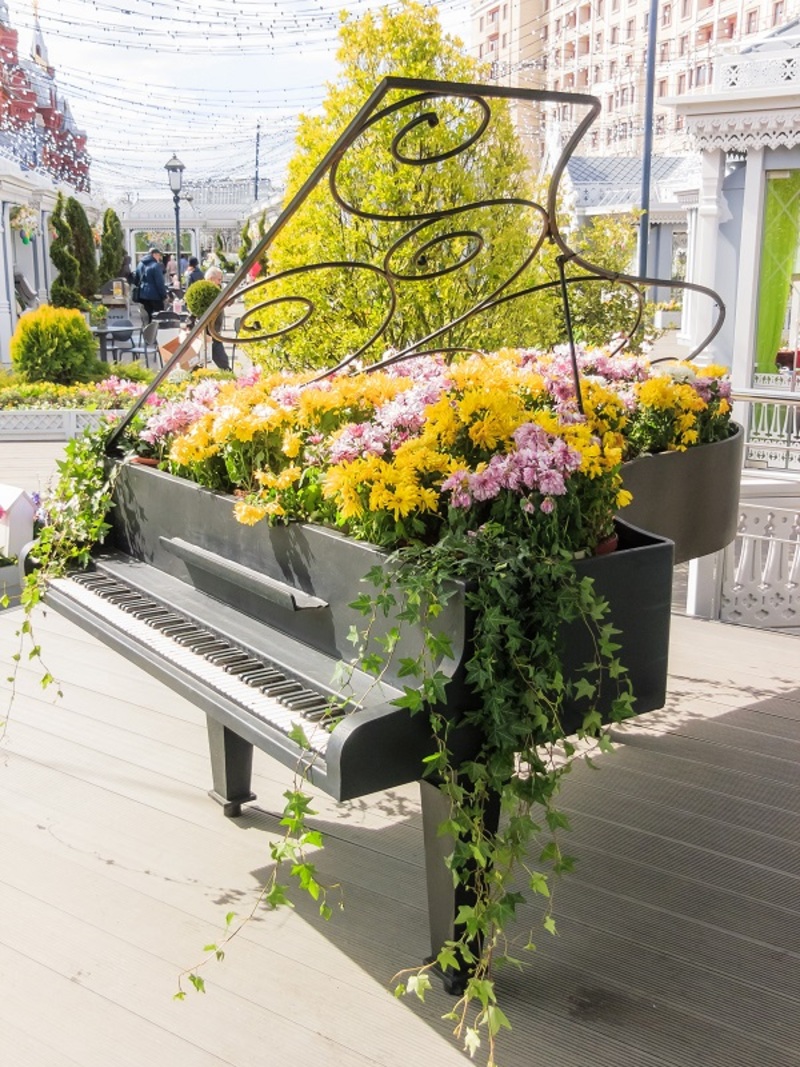Learn the Intriguing Facts that Set Tulips Apart
Posted on 11/09/2025
Learn the Intriguing Facts That Set Tulips Apart
Tulips are more than just beautiful spring blooms. These iconic flowers captivate hearts around the globe with their vivid colors, delicate form, and fascinating history. Whether you're a passionate gardener, a casual admirer, or simply seeking to expand your botanical knowledge, you'll find something to love in tulips' intriguing qualities. Dive into this comprehensive guide to discover all the intriguing facts that set tulips apart from other flowers.
Understanding the Unique Identity of Tulips
Tulips (genus Tulipa) are a member of the lily family, Liliaceae, and showcase a diversity and history that is as deep as their radiant colors. Let's take a closer look at what makes these flowers unique and time-honored symbols of spring.
The Origins and History of Tulips
- Native Habitat: Tulips are native to Central Asia, specifically areas of the Tien Shan and Pamir-Alai mountains. Contrary to popular belief, they didn't originally come from the Netherlands.
- Early Cultivation: The ancient Persians and Turks were the first to cultivate tulips, using them as ornamental plants in palace gardens as early as the 10th century.
- Introduction to Europe: Tulips were introduced to Europe in the 16th century. Botanist Carolus Clusius played a significant role in bringing tulips to the Netherlands, where their popularity soared.
- Tulip Mania: In the 1630s, the Netherlands experienced "Tulip Mania." During this period, tulip bulbs were traded like modern-day stocks, and some rare bulbs were worth more than houses! This event is often cited as one of the first recorded economic bubbles.
The Astonishing Biology of Tulips
Tulips are geared for survival and splendor. Their biological features set them apart in several ways:
- Diverse Species: There are over 75 recognized species and thousands of cultivated varieties of tulips, ranging in color, shape, and blooming period.
- Adaptable Growth: Tulips naturally thrive in regions with cold winters and hot, dry summers, making them particularly resilient and adaptable compared to many flowering plants.
- Underground Strength: The tulip bulb contains all the essentials for a new plant, including roots, leaves, and the flower bud, allowing it to survive harsh winters underground.
- Leaf and Flower Structure: Tulips typically bear a single, cup-shaped flower atop a slender stalk, complemented by waxy leaves that help reduce water loss.

Fascinating Facts That Set Tulips Apart
1. Tulips' Incredible Color Palette
Few blooms offer the diversity of color that tulips do. They can be found in almost every color imaginable--except true blue. Tulip colors include vivid reds, yellows, oranges, purples, pinks, whites, and even multi-colored or striped varieties.
- Striking Varieties: Varieties like 'Rembrandt' are famous for their striking streaks or "flames" caused by a virus, once highly prized during Tulip Mania.
- Symbolism of Colors: Each tulip color carries its own meaning--red tulips symbolize true love, purple indicates royalty, yellow stands for cheerful thoughts, and white is associated with forgiveness.
2. The Global Tulip Industry: More Than Just the Netherlands
- The Dutch Tulip Empire: The Netherlands is known as the world's principal exporter of tulip bulbs, producing billions annually for markets worldwide.
- Tulip Festivals: From Canada to Turkey, countless countries host tulip festivals every spring, celebrating the tulip's beauty and its historical journey. The Istanbul Tulip Festival is especially noteworthy, paying homage to the flower's original roots.
3. Tulips and Culinary Adventures
Believe it or not, some tulip petals are edible! During the Dutch famine of World War II, people resorted to consuming tulip bulbs, although not a delicacy by choice. Certain modern chefs use the petals for garnishes, adding both color and a subtle taste to dishes.
- Culinary Uses: Edible tulip petals can have a mild flavor, similar to lettuce or peas. However, not all varieties are safe to eat, and bulbs must be handled with caution due to potential toxicity.
- Symbolism in Food: In Turkish cuisine, the tulip is sometimes used as a motif in desserts and teas, highlighting its deep cultural significance.
4. Tulips' Role in Art and Culture
The influence of tulips extends beyond gardens and parks. They have long served as inspiration in art, design, and popular culture:
- Iconic Artwork: The famous Dutch Golden Age was marked by still-life paintings of tulip bouquets by artists like Jan Brueghel and Rachel Ruysch.
- Symbolism: In Persia and the Ottoman Empire, the tulip was a symbol of perfection and paradise, often appearing in poetry and imperial designs.
- Modern Branding: The tulip remains an instantly recognizable symbol, featuring in national emblems, postage stamps, and even product logos.
5. The Science of Tulip Blooms
Tulips are not just beautiful--they're a marvel of botanical engineering.
- Photoperiod Reaction: Tulips "know" when to bloom based on the length of daylight in spring, ensuring blossoms at the perfect time.
- Color Chameleons: Some tulip colors can subtly change depending on soil pH, temperature, and the age of the flower.
- Self-Propagation: Tulip bulbs naturally produce offsets--smaller bulbs that can be separated and replanted, making them easy to propagate for future seasons.
How to Grow and Care for Tulips
Want to enjoy the splendor of tulips in your own garden? Follow these essential tips for planting and caring for tulips that will flourish year after year.
Step-by-Step Guide to Planting Tulips
- Choose Quality Bulbs: Opt for firm, healthy bulbs free from blemishes or mold.
- Pick the Right Time: Plant tulip bulbs in autumn, about 6-8 weeks before the first hard frost is expected.
- Optimal Depth: Bury bulbs at 6-8 inches deep, with the pointed end facing up.
- Soil and Sun: Tulips prefer well-drained soil and a sunny location for optimal blooms.
- Watering: Water thoroughly at planting time, but avoid soggy soil as this can cause bulb rot.
Caring for Your Tulips
- Post-Bloom Care: Allow the leaves to die back naturally before removing them. This enables the bulb to store energy for the next blooming season.
- Feeding: Fertilize bulbs at the time of planting and as growth emerges in spring with a balanced bulb fertilizer.
- Pest Management: Guard against pests like rodents, deer, and fungal diseases by using deterrents and ensuring good garden hygiene.
Tips for Long-Lasting Tulip Arrangements
- Cutting: Harvest tulips early in the morning when flowers are still slightly closed.
- Hydration: Place cut tulips in cool, fresh water and change the water daily for maximum longevity.
- Storage: Tulips can continue to grow and elongate even in a vase, so leave a bit of space above them for natural movement.
The Most Intriguing Varieties of Tulips
With thousands of cultivars, tulips come in a dazzling array of shapes, sizes, and patterns. Here are some of the most intriguing types that highlight the strength and versatility of tulips:
Classic Beauties
- Darwin Hybrid Tulips: Known for their large, sturdy blooms and perennial reliability.
- Single Late Tulips: These bloom later in the season, offering bold colors and a classic tulip shape.
Exotic and Unusual Tulips
- Parrot Tulips: Noted for their ruffled petals and intense, flamboyant colors.
- Fringed Tulips: These have a delicate fringe along the petal edges, giving them a frosted appearance.
- Viridiflora Tulips: Characterized by green streaks on their petals, these add exotic flair to flower beds.
- Double Tulips: Called "peony-flowered" for their numerous, layered petals resembling peonies.
Wild Species and Botanical Tulips
- Tulipa tarda: A diminutive, wild species with star-shaped yellow and white flowers.
- Tulipa sylvestris: Known as the wild tulip, with dainty, nodding yellow blossoms and exceptional fragrance.

Fun and Curious Trivia: More Intriguing Tulip Facts
- National Flower: The tulip is the national flower of Iran and Turkey, a reflection of its cultural significance.
- Anti-Freeze Mechanism: Tulip bulbs have natural anti-freeze properties, allowing them to endure freezing underground conditions and emerge in brilliant springtime bloom.
- Longevity: Some tulip bulbs can continue producing flowers for up to 10 years, especially species tulips that are closer to their wild ancestors.
- Celestial Connections: The word "tulip" is believed to derive from the Persian word for "turban," inspired by the flower's rounded, wrapped shape.
- Space Travel: Tulips have even been grown aboard the International Space Station as part of botanical experiments in microgravity!
Conclusion: Celebrate the Extraordinary Tulip
Tulips are more than mere flowers--they are a testament to beauty, resilience, and fascinating history. From their surprising origins and whirlwind economic history to their dazzling diversity and deep cultural symbolism, tulips hold a unique spot in the world of flora. Whether you're marveling at dazzling beds in a public park, tending to your own patch at home, or admiring a freshly cut bouquet, take a moment to appreciate all the intriguing facts that set tulips apart.
Let their vibrancy inspire your garden, your home, and your appreciation for the wonders of nature. Next spring, when you see a cluster of tulips blooming, remember--you're gazing at a flower that has enchanted and intrigued the world for centuries!
Are you ready to plant your own tulip garden or explore more facts about unique flowers? Share your passion for tulips, and let your love for these historic blooms blossom!
Latest Posts
Myths About Flower Lifespans: Truths and Tips for Longer-Lasting Blooms
Learn the Intriguing Facts that Set Tulips Apart
Hydrangea Care: The Keys to Gorgeous Blooms







